Tuning and Stringing the Dilruba or Esraj

| STRINGING AND TUNING THE DILRUBA AND ESRAJ Section 1 – Introduction Section 2 – Basic Concepts of Tuning Section 3 – Overview of Strings Section 4 – Dilruba/Esraj Strings Section 5 – Tools Section 6 – Stringing the Base Section 7 – Stringing the Tuning Pegs Section 8 – Tightening the Strings |
There are a few tools that are of concern to the dilruba and the esraj. Some of these are obvious, but some are perhaps not so obvious. Let us go over some of these here.
There are a number of tools that we will need to maintain and tune our instrument. We will discuss a number of them here. These are basically wire cutters, a tuning wrench, and something to refer to for pitch. There are also a few odds and ends such as chalk and machine oil which are also important.
Wire Cutters – This is essential. It is also so common that we really do not need to discuss it any further.
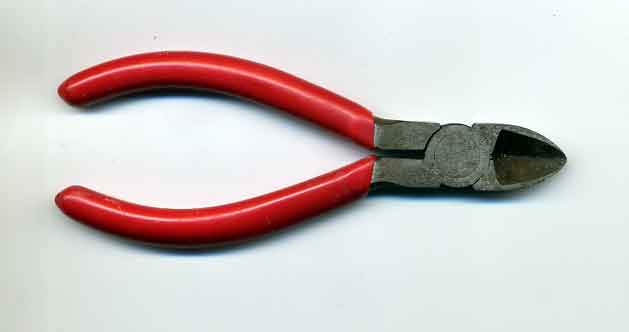
Tuning Wrench (Mochana or Chutki) – This is a tool which seems to be specific to sarangi, dilruba and esraj. It is just an extension handle which is used to tune the keys. This is especially important for the sympathetic strings; the tuning pegs are so close together that it is difficult to tune them with the bare hands.
There are a variety of styles. They may be made of combinations of wood, metal, or bone.
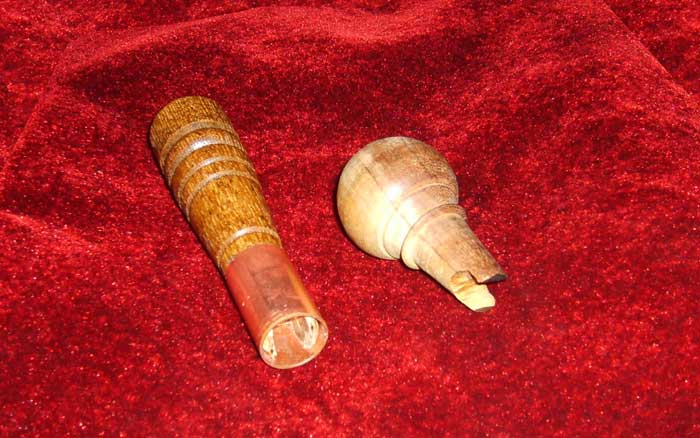
They may be obtained in several ways. These may be purchased over the internet, or you can make them yourself. I assure you that any time expended in making one of these will be more than compensated by the ease of tuning the sympathetic strings.
Pick – It is very helpful to have a small stick to pluck the sympathetic strings. I find the easiest way to get this is to take a small bamboo skewer and cut it off to a comfortable length. About four inches seems comfortable. This is shown in the picture below.

Ring (Chutta) – The chutta is a small cloth or fibre ring which is usually employed by tabla players. However, it is a very useful tool for anyone needing to work with an esraj for any length of time. Many people regularly employ one as a base when actually playing either a dilruba or esraj.
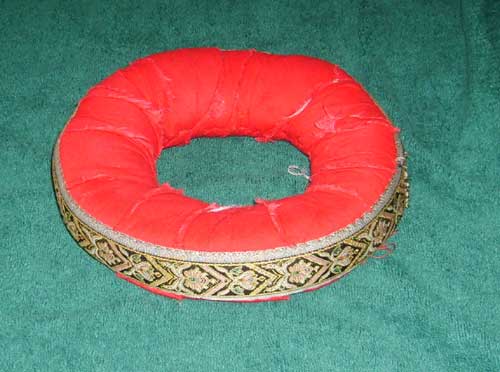
The use of the chutta (ring) is really simple. Just place it beneath the resonator of the esraj and the instrument will not wobble. Furthermore, it reduces the likelihood that the instrument’s finish will be scratched by the floor during tuning or maintenance.
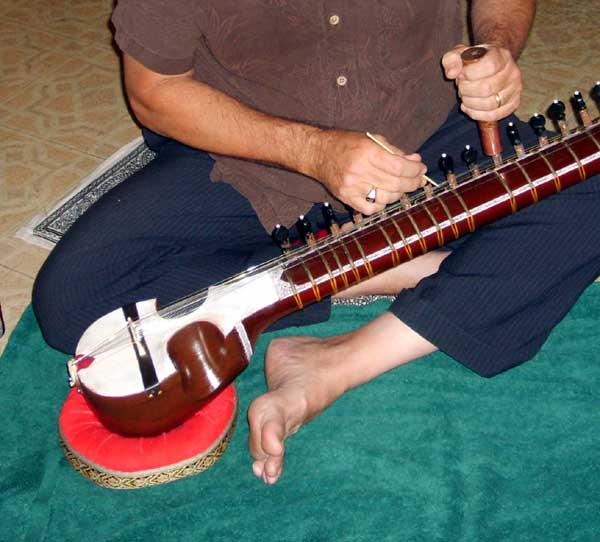
Micrometer or Wire Gauge – It is very useful to have a means of measuring the gauge of the strings. Although the wires will be marked when you buy them, invariably after some time you will find yourself with numerous strings in a bag that all look alike. There are several ways to measure the thickness of the wires, but wire gauges and micrometers are the most common. The calibrations vary from country to country, the example shown below is a micrometer that is calibrated in 1/1000 inch increments.
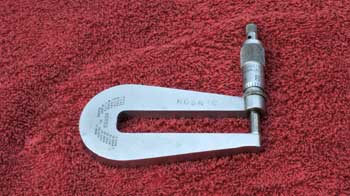
| THESE BOOKS MAY NOT BE FOR YOU |
|---|
A superficial exposure to music is acceptable to most people; but there is an elite for whom this is not enough. If you have attained certain social and intellectual level, Elementary North Indian Vocal (Vol 1-2) may be for you. This has compositions, theory, history, and other topics. All exercises and compositions have audio material which may be streamed over the internet for free. It is available in a variety of formats to accommodate every budget. Are you really ready to step up to the next level? Check your local Amazon. |
Getting the Correct Pitch
You will need some reference point in order to get the correct pitch. Attempting to tune the instrument without some reference point is very difficult. Not only is the instrument very difficult just to tune to itself, but the overall pitch will wander around to such a degree that you will never be able to orient yourself. Many tools exist which may be used as a reference; we will go over some of them here.
Smartphone Apps – In recent years a number of applications have developed for iPhones, iPods, iPads, and a host of other hardware. Theses mimic the functions of stand-alone electronic tuners, electronic sur petis, etc.
It is unlikely that you will wish to purchase the following stand alone items. Cost considerations make this an undesirable approach. However, since the smartphone apps mimic the following items, we will give a discussion so that the concepts are understood.
Harmonium – The harmonium is probably the most traditional instrument used to help tune the dilruba or the esraj. For this, you simply have a friend play the desired note while you tune the strings. Ideally you hold down ONLY the Sa, while you use you own sense of pitch to tune all of the strings in reference to this single tone. If you do this, they will tend to tune to some harmonically correct tuning (i.e., just intonation), and allow you to avoid the incorrect intervals that accrue from using a tempered scale.
If you feel that you just do not have a sense of pitch which is developed enough to hear all of the notes in relationship to a single tone, you can still do well with a harmonium. The reason is that the most important strings of the dilruba and the esraj are tuned to either Sa (1st), Pa (5th), or Ma (4th). It just so happens that there is no significant difference between a natural 4th and a tempered fourth; nor is there a significant difference between a natural 5th and a tempered 5th. Therefore, a harmonium should work fine for the main playing strings.
It is not really a good idea to use the harmonium as reference for each of the sympathetic strings. Only the 4th and 5th are, for all practical purposes, the same between the tempered and the just scales. Maybe the augmented 5th is chalable (isn’t chalable a nice Hind-lish word?). Unfortunately, tuning the rest of the sympathetics to the tempered scale of the harmonium is a somewhat less than desirable approach.
Although tuning the dilruba or esraj with the assistance of the harmonium is the most traditional approach, we must not forget that there are problems. One obvious problem is cost. If you do not already own a harmonium, it is foolish to go out and purchase one just for this purpose. There is also the problem that most harmoniums are not correct to international pitch. They are not tuned to any particular standard. They usually tend to run about half of a semitone (50 cents) higher than international pitch. But they can be anywhere! This lack of standardisation will make things very difficult when you try to adjust to other musicians.
Tuning Fork – A tuning fork may be a more accurate reference if you want international pitch. However lets face it; it is SO 19th century!
Electronic Tuner – A digital tuner (chromatic) is a very handy tool. Today they are inexpensive and extremely accurate. They come with a variety of options. They are also often available for mobile phones, sometimes for free.
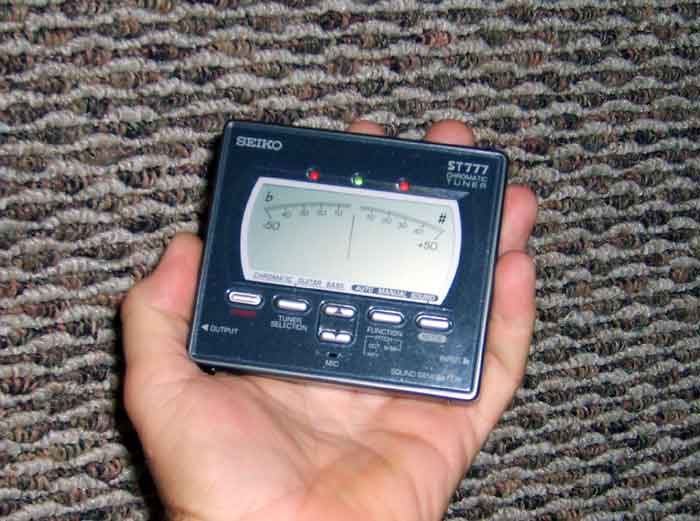
It is important to know what to look for in a tuner. The most common versions are guitar tuners and chromatic tuners. It is important to understand the distinction.
You will need to purchase a chromatic tuner. A chromatic tuner is designed to accurately tune to any of the notes of the chromatic scale. The chromatic scale is of course C, C#, D, D#, E, F, G, G#, A, A#, and B.
When purchasing a tuner, one should not get confused and buy a guitar tuner. This is an easy mistake to make, because guitar tuners are much more common than chromatic tuners. The guitar tuner only makes provisions for tuning to E, A, D, G, B, and again E. Although this is obviously less flexible than a chromatic tuner, it is much easier for guitarists to use. Lets face it, there are an lot of guitarists out there, and mighty few dilruba and esraj players.
It should be pointed out that there are tuners specific to a number of other instruments, these include violin, mandolin, bass guitar, and a host of other instruments. But they do not have nearly the popularity of the chromatic or guitar tuners. They are also unsuitable for our purposes.
If you use an electronic tuner, you should consider what it is doing with your brain. To be more precise, you need to be concerned with what it is NOT doing to your brain. We must never forget that the act of tuning our instrument is not just a question of setting the instrument to the correct pitch, but we are also tuning our mind to perform in a particular modality. When we are tuning our instrument, especially when we are tuning the sympathetic strings, we are getting ourselves in tune with the rag that we are going to play. When you simply read off the LED display of a tuner, this process of “getting into the rag” just does not happen. This is one reason why many modern tuners also give you the option of playing an audible tone. The act of comparing this audible tone to the sound of your instrument, is a much better exercise for the music student. Furthermore, if you are attentive to only playing Sa through the tuner, then it also makes it much easier to tune the sympathetic strings to just intonation rather than a tempered scale.
Please note that today it is more common to download tuners as an app for ones smartphone.
Electronic Tanpuras / Sur Peti – An electronic tanpura or sur peti, is a great little item to have. Not only is it helpful in tuning, but it is a great accompaniment for both practice and performance. We must not forget that the frets of the esraj and dilruba are only hints as to where the fingers are supposed to go. Ultimately, you have to use your ears to know where the fingers are really supposed to be. It is much easier to do this if you have the nice rich drone of a tanpura going in the background. Obviously a real tanpura is ideal, and is certainly preferred for stage; but it is not at all practical for day-to-day practice.
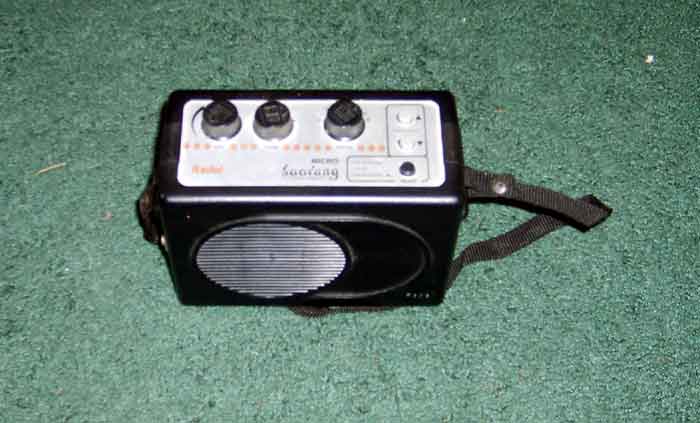
There is one aspect of the electronic tanpura that should be considered. Some electronic tanpuras have their key fixed according to the international pitch; that is to say that they have fixed intonations of A, A#, B, C etc. Other electronic tanpuras have continuously variable pitches. Continuously variable pitches may be great for harmonium players, but they are not really what we want. It is much better for a dilruba or esraj player to have an electronic tanpura which is hard-wired to output a fixed international pitch.
Tanpura Recordings – The tanpura recording was a cost effective alternative to the electronic tanpura. We must not forget that if we are playing a dilruba or esraj, we will not need to have the ability to to play every key. If we string our instrument as most people do, then a C# is all we ever really need. Therefore, we can purchase just a recording of tanpura for that pitch. Everyone has a boom box, so in a sense, slipping a tanpura CD into a boom box converts it into an electronic tanpura. This approach is better than an electronic tanpura in the sense that it will have a much more natural sound, and it will only cost a fraction of the price of an electronic tanpura.
We have discussed a great length the tools which help the dilruba or esraj player establish the pitch. Although this pretty much covers most of the things that we need, there are still a few odd items that we need to have.
Misc. Items
Chalk – Most dilrubas and esrajs, use friction pegs for the sympathetic strings. For friction pegs, it is always a good idea to put chalk on them; this keeps them from slipping. Furthermore, when you buy a new instrument, there are always questions concerning how well the pegs fits into the holes. Over time, the holes and the pegs will wear each other to the extent that the fit is very good. Chalk is slightly abrasive and will facilitate this breaking-in process.
Oil – It is a good idea to have a light oil to put on the mechanical tuners. This is not for reasons of friction, we actually want friction because it holds the strings to a fixed pitch. The real reason for using oil is that we are never sure what kind of metal is being used for the mechanical tuners. There is a strong possibility that these mechanisms will be susceptible to rust. If you keep a slight coating of machine oil on the mechanism, it will guard against this.
We have covered the tools and items that you will need for the tuning and maintenance of your dilruba or esraj. At this point, it is necessary to look at some of the techniques used in stringing and tuning your instrument.
| STRINGING AND TUNING THE DILRUBA AND ESRAJ Section 1 – Introduction Section 2 – Basic Concepts of Tuning Section 3 – Overview of Strings Section 4 – Dilruba/Esraj Strings Section 5 – Tools Section 6 – Stringing the Base Section 7 – Stringing the Tuning Pegs Section 8 – Tightening the Strings |